The modern sea kayak has evolved far from its roots as the hunting tool of the Inuit. The comfortable cockpit, reassuring stability, and heavy construction of today’s typical touring kayak make for an easy ride, but at no small cost. The first paddle in a light, narrow, V-bottomed West Greenland-style kayak is a revelation. The boat accelerates quickly and easily, it edges and turns willingly, and rolls can be executed with aplomb.
The Shrike line of kayaks from CNC Kayaks is based on measurements taken from an original Inuit Disko Bay kayak now in the collection of the Canadian Museum of Civilization in Ottawa, Canada. Construction of the Shrikes is as simple as it can be, using light plywood, fiberglass, and epoxy to re-create the look and feel of the native boat while retaining the safety offered by solid bulkheads and fiberglass sheathing.
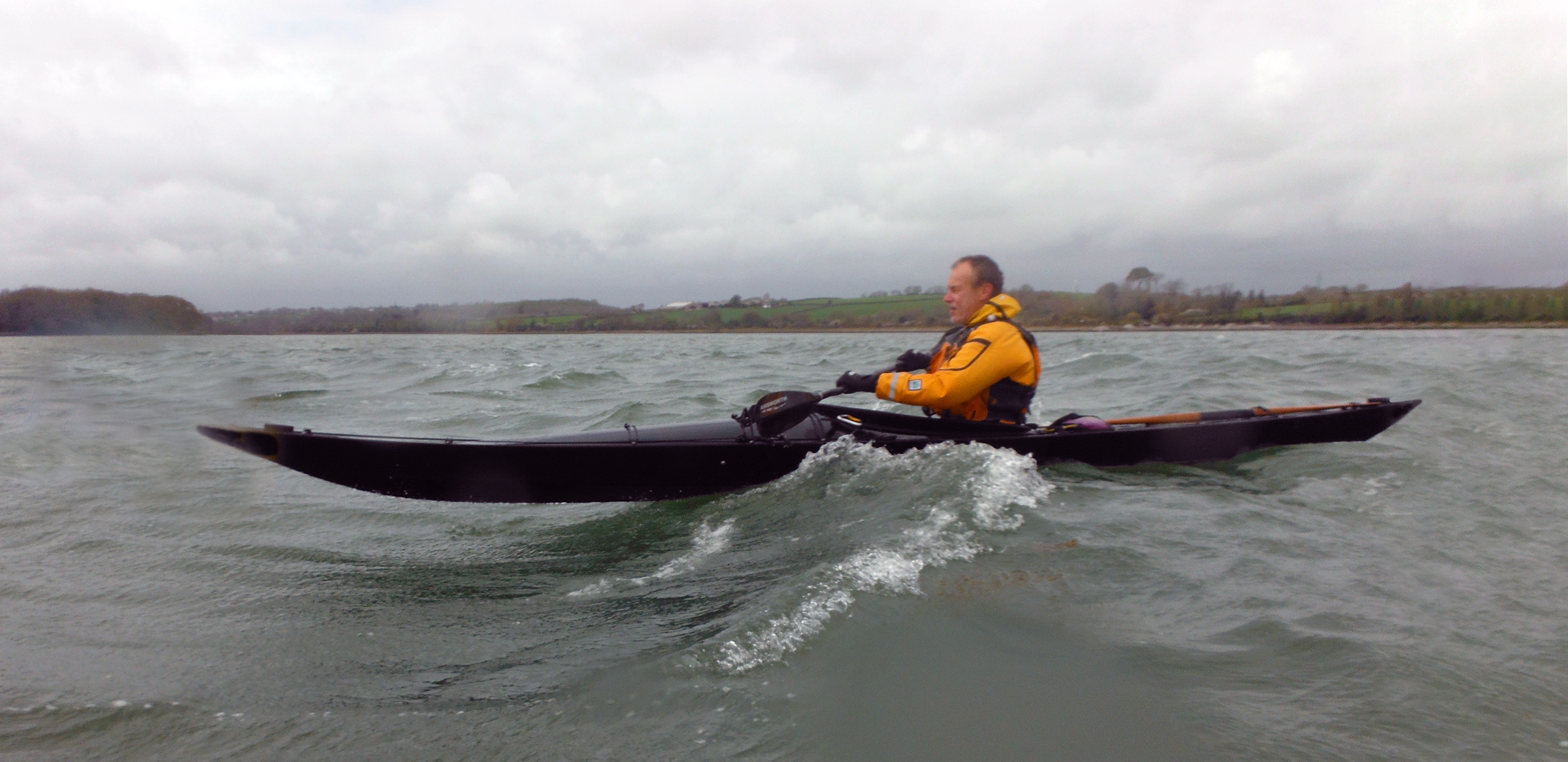 CNC Kayaks
CNC KayaksThe full-size Shrike offers a roomier cockpit and higher freeboard.
Nick Crowhurst and his son Christopher (CNC stands for Christopher and Nick Crowhurst) have shared a lifelong passion for traditional kayaks and paddling skills. The original Shrike was created by Nick, and the design was later modified by Christopher to answer calls for one version optimized for touring and another ideal for rolling.
The plans and instructions are offered for free through their website and invite builders to first select one of three basic versions, and then fine-tune that design to create a boat that’s an exact fit for the kind of boating they have in mind. The principal options affect the deck and cockpit; all versions have the same hull shape below the waterline, and therefore will have a similar feel on the water.
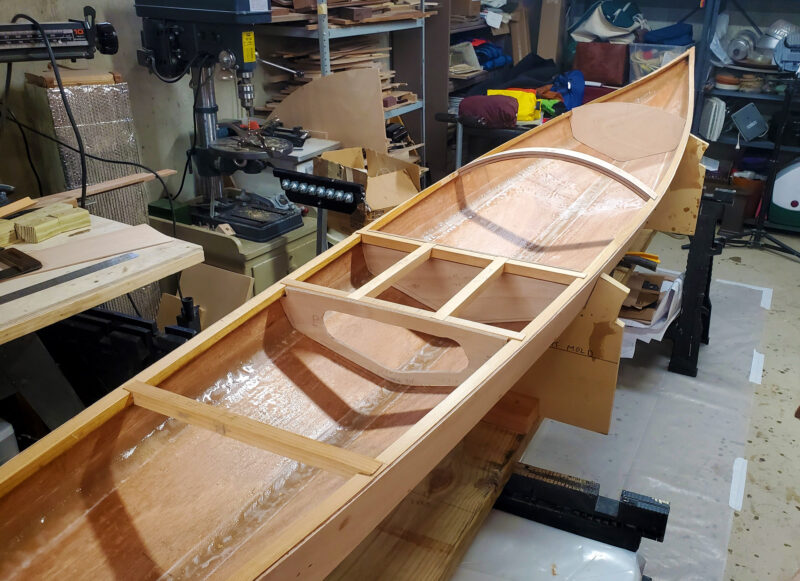 David Dawson
David DawsonThe Shrike range is built stitch-and-glue, and the detailed instruction manuals and full-sized plans are available at no cost from the designers. I used 3mm okoume plywood and, wanting to keep the weight down, was careful not to overdo the fiberglass and epoxy.
There are three versions. The Shrike is the original Shrike from which the variations were developed and features the Greenland hull with a modern, keyhole cockpit. This boat would be an easy first step into Greenland-style kayaking. The Shrike-Too has what’s come to be known as an ocean cockpit. Much shorter than today’s standard cockpit designs, it keeps the paddler tied to the boat more effectively. Or, with period leather and bone outfitting, the Shrike-Too could be made to look much like its skin-on-frame forebears. And the Shrike-R is designed expressly for practicing rolling. It has a much lower deck than the other two, reducing the volume and weight of the kayak to facilitate rolls, while its wider version of the ocean cockpit allows more upper-body flexibility.
Nick and Christopher don’t stop with these choices. A chart is included suggesting scaled versions of the plans to match the boat to the paddler’s weight. And all three versions can be built with the hull’s side panels trimmed to any of seven heights. Also, the curve in the forward deck can be eased for a snugger fit. Add to that the options of a skeg, a day hatch, and whatever deck rigging is desired, and you’ll have yourself a bespoke watercraft.
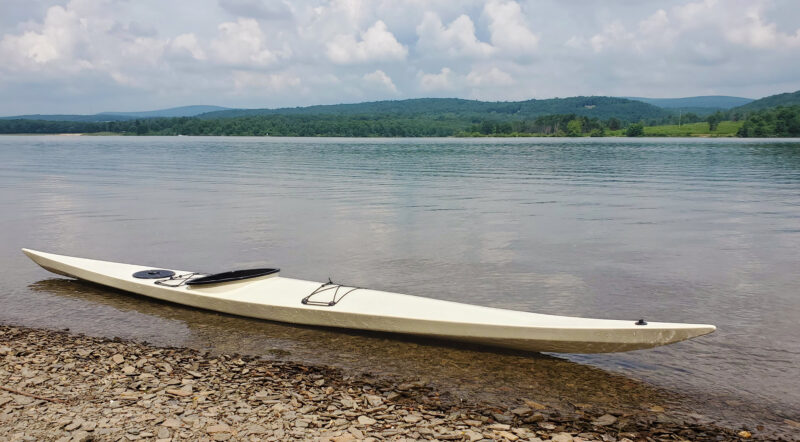 David Dawson
David DawsonEverything about my Shrike-R is minimal. I chose the narrowest side panels, the lowest-profile foredeck, and a deliberately snug cockpit, all with an eye on speed and excellent rolling capability.
I wanted a boat to develop my rolling skills, so I went to the Shrike-R. I was seeking a very minimal boat—deliberately low in the water and snug-fitting for effortless rolling. The chart in the building guide told me that a 92% build would be the best fit for my weight.
The manual is as detailed as any I’ve seen, with step-by-step instructions illustrated with color photos. They are written with the first-time builder in mind, full of tips for the novice. If, for example, you’re unsure about scarfing plywood panels, they detail an easier method: butting panel ends together and applying ’glass tape to each side.
No lofting is required to build a Shrike—full-sized patterns for all parts are provided as a printable PDF file. (For those who can use them, .dwg and .dxf files are also available.) The single PDF was created at 50-percent scale, so the printer needs to double the size, printed at 200 percent. The required paper width is 24″. I went to my local office supply store, which has a printer that can easily do this. The result was a roll of paper 2′ wide and about 22′ long.
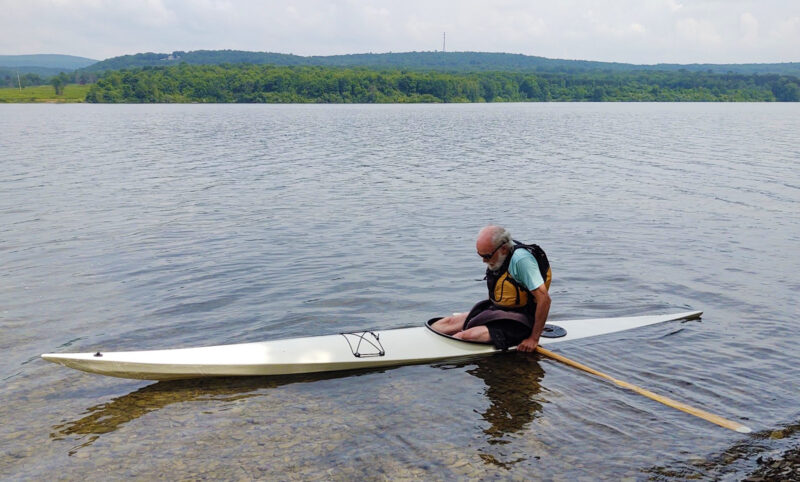 Caroline Dawson
Caroline DawsonIt is a squeeze to get into the cockpit of my intentionally compact Shrike-R but the effort pays off—once settled in I instantly feel well connected to the boat.
The kayak is built stitch-and-glue style and starts by transferring the patterns on the printout to 3mm marine-grade plywood. I used okoume because it’s light, available, and less pricey than the alternatives. After the pieces have been cut out, the builder has everything needed to stitch-and-glue the hull together. The deck goes on by gluing it down to light sheer clamps that have been fit inside the assembled hull—the easiest way I know to close-up a plywood kayak.
The building manual says the Shrike can come in at 32 lbs. Mine is a couple of pounds under that, but it is also possibly the smallest Shrike ever made. If care isn’t taken or extra fiberglass is added to make the boat stronger, the weight will go up quickly.
Outfitting can be done to the builder’s preferences, but it is important to maintain a low seating position in boats of this type. A 1″-thick sheet of Minicell or similar foam is all that’s needed. A higher seating position throws off the dynamics of these responsive craft. A block of foam is suggested for a footrest. More Minicell or a commercial back band can be used behind the seat.
My boat took about $650 in materials to build. There are very few commercially available kayaks that compare with the Shrike, but those that do cost around $4,000 to $5,000, and some are heavier.
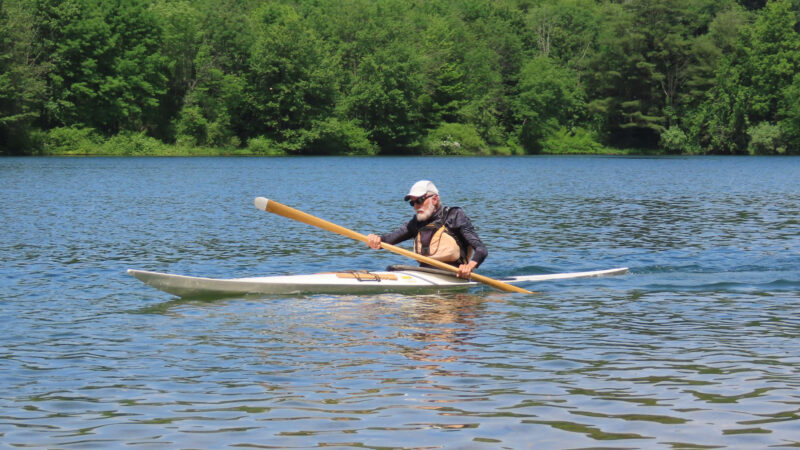 Caroline Dawson
Caroline DawsonThe Shrike-R’s maneuverability is remarkable. The light weight, narrow beam, and minimal wetted surface all contribute to swift acceleration and rapid, controlled turns.
I deliberately made my Shrike a tight fit. I chose both the lowest side-panel height and the lower profile of the masik, a laminated wood arch that determines the height of the foredeck and reinforces the front of the cockpit. I finished the boat with a coat of marine enamel. Outfitting is Minicell foam for footrest, seat, and backrest.
I put a single hatch in the afterdeck and a drain plug in the front. One cross of bungee in front of the cockpit, and a second behind, and the boat was ready for trials.
Once I had squeezed myself in, my Shrike-R felt very lively on the water. This I expected, having paddled similar boats before. Beyond that, I felt more connected to the boat than any other kayak I’ve been in. And it wasn’t just the tight fit: the smallest movement brought an immediate response in the kayak. The magical mix of light weight, narrow beam, and minimal wetted surface—all in a boat that the paddler truly wears—allows the Shrike to accelerate and turn rapidly. Imagine the way a fish darts when startled. Lift a knee and the Shrike edges immediately, which admittedly takes getting used to, but then the kayak digs in and holds just the right angle to carve a turn.
There is good secondary stability here, despite the anticipation created by the very low initial stability at rest—well, it really doesn’t want to rest. Once under way, the hull’s motion through the water and the repeated, steadying plant of the paddle blades bring stability. Confidence in the boat comes with experience. The low deck on my Shrike-R reduces reserve buoyancy below that of the Shrike and Shrike-Too versions, but even so I’ve never capsized accidentally. Deliberately? It must be hundreds of times.
I wanted a rolling machine, and that’s what I have. There’s no question that if I cannot pull off a roll, it’s me, not the boat. Since working with the Shrike-R, I’ve advanced from the standard and storm rolls I already had down to some of the other Greenland rolling techniques, and most recently I developed a reliable roll with the norsaq, the short wooden spear-throwing stick used by the Inuit. I have my sights on perfecting the hand roll. And will I ever pull off the straitjacket roll, a roll with no paddle and arms crossed over the chest? If I do, it will be in this boat.
The Shrike family of boats isn’t for everyone. But it can’t be beat for the kayaker who wants a sports car of a boat that’s lighter, quicker, and nimbler than the typical production touring boat. The potential builder should understand that getting the most out of a traditional kayak does take time and practice. The strong inputs that become habit to control a heavier, long-keeled sea kayak will prove too much for the agile Shrike. It will feel flighty at first, but as its paddlers learn to drive the boat with finesse, they will also discover that they can maneuver easily and gracefully.
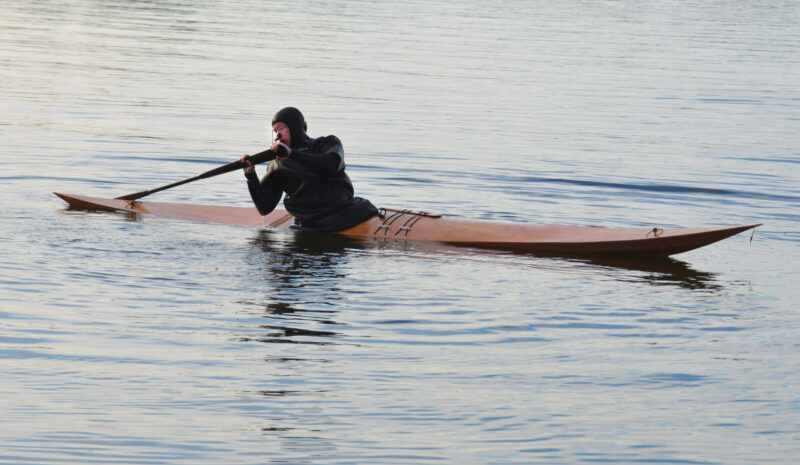 Caroline Dawson
Caroline DawsonThe Shrike-R is the rolling machine I was looking for. I’ve been able to work on and improve techniques I already knew and am mastering new ones. And, while there’s not much internal volume to accommodate gear for camp-cruising, with the Greenland paddle it’s easy to achieve and maintain a good cruising pace.
There are negatives. The seating position is lower than typical of sea kayaks, and some will find this uncomfortable even after taking the time to get used to it. Others may never get used to the wiggly quality of the hull at rest. The Shrike is not the right choice for birdwatching, fishing, or photography. Having one hand, if not both, on the paddle, with a blade in the water, are important elements of stability. The largest variation of the Shrike could be packed for camping, but standard sea kayaks offer much more internal volume. But those who seek performance will come to love the way the Shrike and paddler engage to meet the water. The paddling experience is more fluid, more elemental.
I strongly advise using a Greenland paddle. The Shrike all but demands it: the two are literally made for each other, and sculls, braces, and rolls are all more smoothly and easily executed with the traditional tool. Moreover, once you have developed a good forward stroke with the Greenland paddle, you’ll find that it’s very easy to maintain a quick cruising pace in the Shrike without overstressing arms and shoulders. The Inuit had it right all along.![]()
David Dawson lives in Pennsylvania but stretches his passion for boating up and down the East Coast, paddling and sailing the waters from Maine to Florida. Since retiring in 2012, he has built six kayaks and a sailboat.
Shrike-R Particulars (can be scaled to suit builder preferences)
Length: 17′ 4 7⁄8″
Beam: 21 1⁄2″
Weight: 32 lbs
The Shrike Build Manual is a download available at no charge from CNC Kayaks.
Is there a boat you’d like to know more about? Have you built one that you think other Small Boats readers would enjoy? Please email us your suggestions.


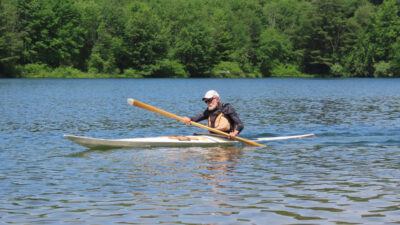
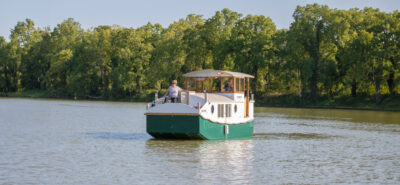
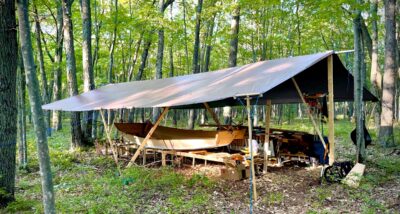
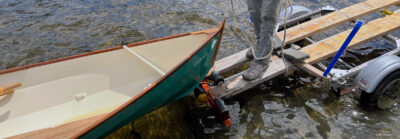
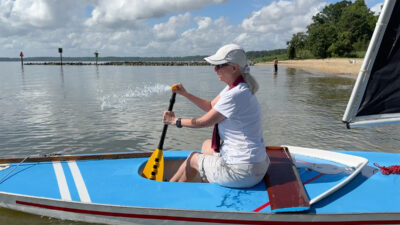
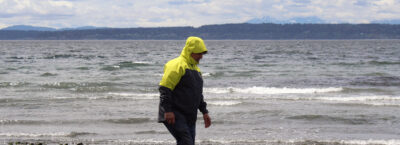
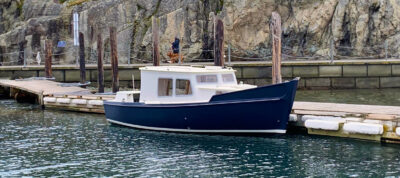
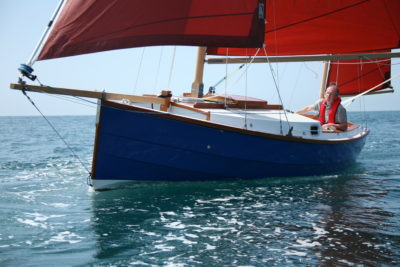
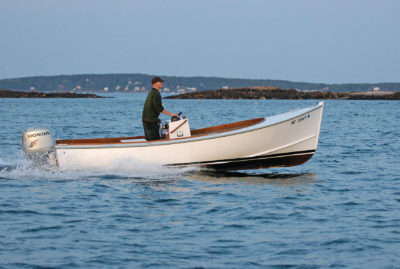
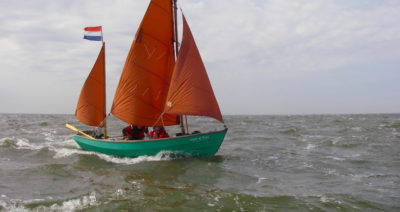
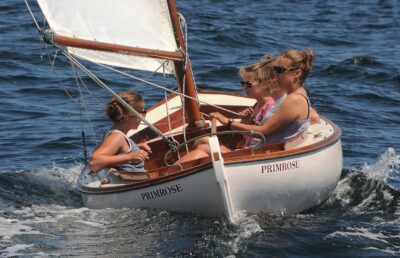
Join The Conversation
We welcome your comments about this article. If you’d like to include a photo or a video with your comment, please email the file or link.